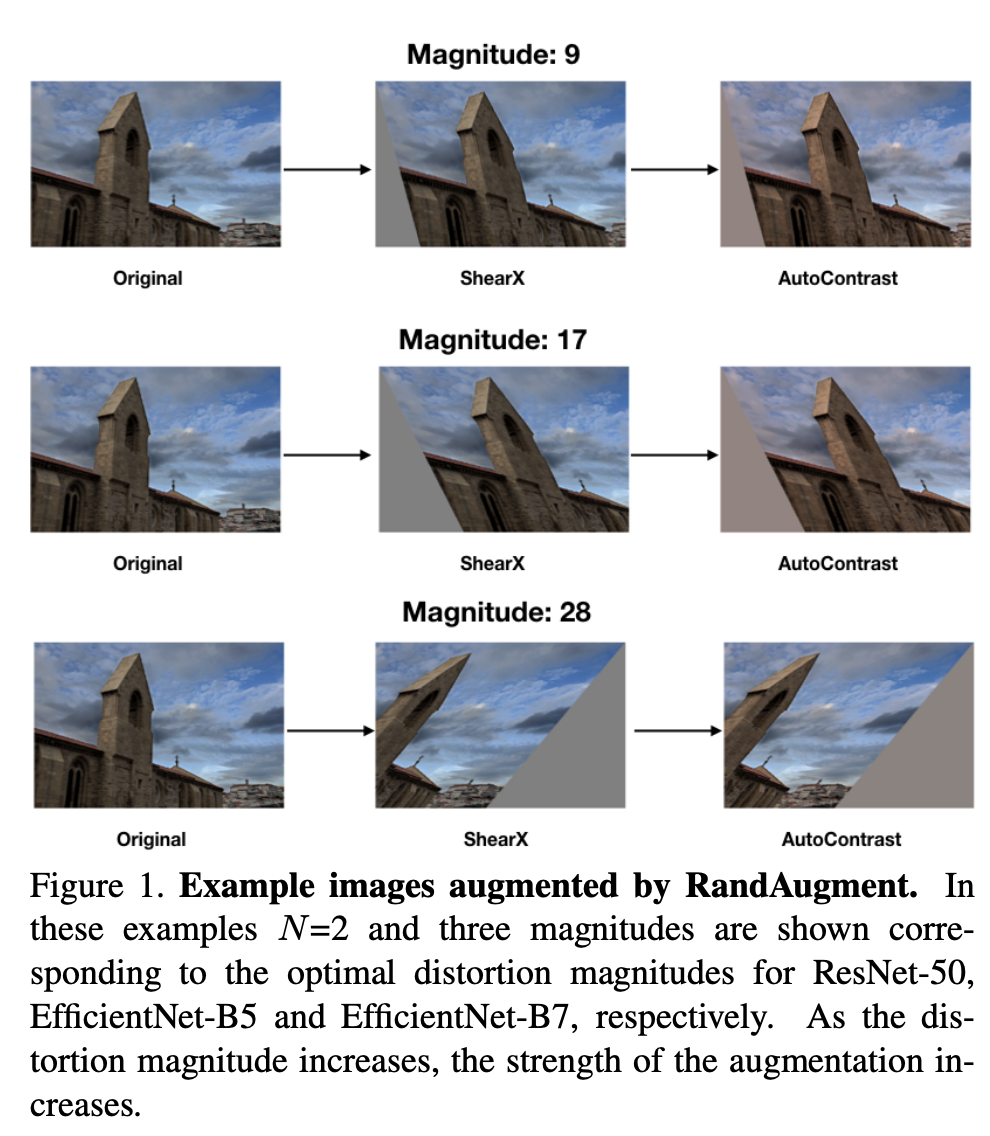 Image Data Augmentation
Image Data Augmentation
RandAugment
Introduced by Cubuk et al. in RandAugment: Practical automated data augmentation with a reduced search spaceRandAugment is an automated data augmentation method. The search space for data augmentation has 2 interpretable hyperparameter $N$ and $M$. $N$ is the number of augmentation transformations to apply sequentially, and $M$ is the magnitude for all the transformations. To reduce the parameter space but still maintain image diversity, learned policies and probabilities for applying each transformation are replaced with a parameter-free procedure of always selecting a transformation with uniform probability $\frac{1}{K}$. Here $K$ is the number of transformation options. So given $N$ transformations for a training image, RandAugment may thus express $KN$ potential policies.
Transformations applied include identity transformation, autoContrast, equalize, rotation, solarixation, colorjittering, posterizing, changing contrast, changing brightness, changing sharpness, shear-x, shear-y, translate-x, translate-y.
Source: RandAugment: Practical automated data augmentation with a reduced search spacePapers
| Paper | Code | Results | Date | Stars |
|---|
Tasks
| Task | Papers | Share |
|---|---|---|
| Image Classification | 16 | 16.33% |
| Automatic Speech Recognition (ASR) | 6 | 6.12% |
| Speech Recognition | 6 | 6.12% |
| Pseudo Label | 4 | 4.08% |
| Self-Supervised Learning | 4 | 4.08% |
| General Classification | 4 | 4.08% |
| Semantic Segmentation | 3 | 3.06% |
| Image Augmentation | 3 | 3.06% |
| Classification | 3 | 3.06% |
Usage Over Time
Components
| Component | Type |
|
|---|---|---|
| 🤖 No Components Found | You can add them if they exist; e.g. Mask R-CNN uses RoIAlign |
